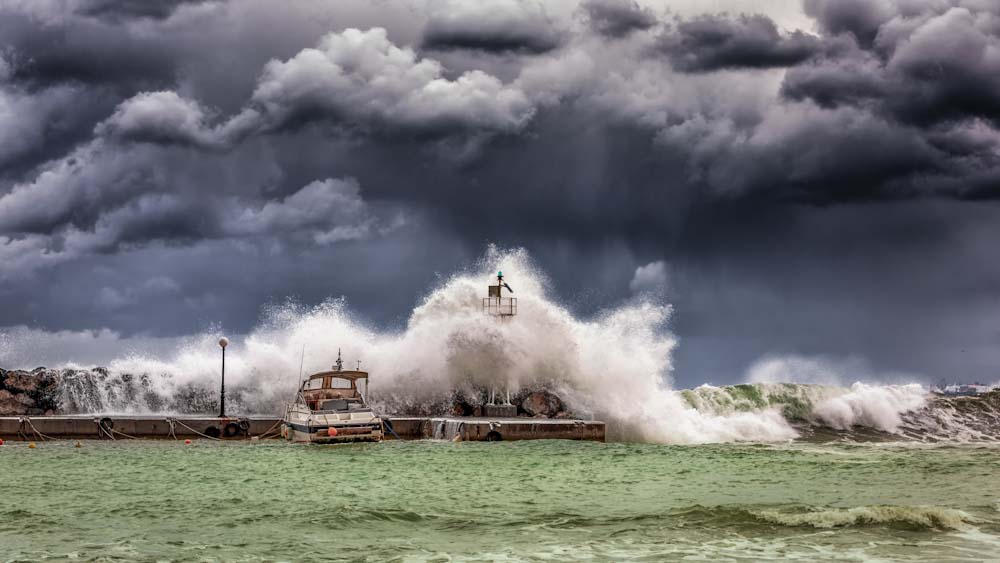This is a Guest Blog Post by Adam A. Lawrence
We
all know that if it can go wrong, it will go wrong. How would you make
effective decisions when your emergency plan falls apart around you?
Remember this acronym: OODA.
What is OODA?
OODA stands for Observe-Orient-Decide-Act.
The concept of the OODA Loop was created by United States Air Force Colonel
John Boyd. It is a decision making tool used to make effective decisions based
on the current circumstances of a given situation. The first step is to Observe
your surroundings and take into account the conditions around you. The second
step is to Orient yourself within these circumstances and understand how
they are or can affect you. The thirds step is to Determine the best course
of action to improve your current situation. Finally, the last step is to Act
on your current analysis. This process repeats until the crisis has passed.
Like most tools that we have at our disposals, the benefits of the OODA Loop are best determined when put into action. So let us examine some real world examples of how I have applied it during emergencies.

Superstorm Sandy
In late October of 2012,
Superstorm Sandy slammed into the East Coast of the United States, killing 285
people and causing $68.7 billion in damages. I was living and working in the
path of the storm. Though I did not experience property damage due to the storm,
my home was without power for 13 days. I had filled my gas tank prior to
landfall, but after a week of commuting and navigating detours and traffic, I needed
gas. When I went out to fill up, I saw lines at the gas stations over a mile
long and witnessed fistfights as restrictions were put in place, and stations
were selling out.
I had to decide what to do. Observe – I saw the long lines and fights at the stations at
every local gas stations. Orient
– I had a quarter tank left, and all local stations were plagued by these problems.
My state has very strict self-defense laws, and I didn’t have anything to get
myself out of a violent situation, if it occurred. Determine – I had family who lived about 30 miles south, in
an area that had not been as damaged. With my level of gasoline and the hazards
of waiting in line in my current area, I decided that my best course of action
was to drive south. Act – I
drove south, found a gas station with a line that was only ¼ mile long and
filled up.

Winter Storms
In 2017, I moved closer to family members. Since then,
there have been many winter storms and sub-zero temperature dips. During these,
family members have lost power and my old furnace stopped working. No power and
no heat can be dangerous in mild weather, let alone during extreme conditions.
Observe – My family and I would monitor weather forecasts and expected conditions. Orient – My home is the only home that has a wood burning fireplace. Additionally, we have a stock of firewood. Determine – We decided that as homes lost power and heat, everyone would come to me. The fireplace would be unaffected by a power loss. Act – Family members would pack overnight bags to have ready if they had to move out.

Severe Windstorm
In July, my town
experienced a severe windstorm. I was on the road at the time, and could feel
my vehicle shaking against the gusts. Hanging traffic lights were held
horizontal as the sustained winds tore by. When I arrived home, I found a large
portion of one of our two chestnut trees had ripped free and had narrowly
missed my home. Though this is a small-scale emergency, I applied the OODA
Loop.
Observe – I looked at the damage that the tree had caused. Luckily, it had missed the incoming power line. Additionally, the winds were still blowing strong. Orient – I quickly realized I had parked under the second chestnut tree. Tree branches were blowing close to the power lines and power lost could occur at any minute. Determine – I needed to move my vehicle, get inside to avoid falling and flying debris and preemptively retrieve my blackout kit. Act – I moved my vehicle to an area free of trees and went inside to avoid debris and retrieved my blackout kit.

Most emergencies that we
experience in our lives are not widespread. The ones close to home are the ones
we need to deal with the most. There are benefits in preparing for the worst
however, and the tools to help prepare for large-scale disasters should be able
to be applied to our everyday crises as well. The OODA Loop is just like any
tool. We should know how to use it, we should practice it and it should be able
to be applied to most situations. There is also the benefit that knowledge
weighs nothing and knowing how to make decisions effectively can be the
difference between surviving and thriving.
Adam A. Lawrence is an author, web content writer in the fields of emergency management and emergency preparedness and private sector security and safety professional with over 10 years of experience. Visit his Facebook page at https://www.facebook.com/adamalawrencewriter/ for more information.

















